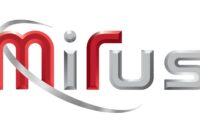Front Line Medical Technologies Article for CardiacVascular News
Resuscitative Endovascular Balloon Occlusion of the Aorta (REBOA) as an adjunct for Patients Arriving in Cardiac Arrest to the Emergency Room
Out-of-hospital cardiac arrest (OHCA) continues to be overwhelmingly fatal despite improvements in Advanced Cardiovascular Life Support (ACLS) protocols and increasing access to Extracorporeal cardiopulmonary resuscitation (ECPR). It takes the lives of almost 350,000 Americans each year with a dismal 10% survival to hospital discharge. The biggest challenge of OHCA is achieving sustained return of spontaneous circulation (ROSC) in refractory cardiac arrest and therefore represents a significant opportunity for improvement.
An exciting new treatment option being investigated for patients with OHCA is either pre-hospital or emergency department use of endovascular aortic occlusion, otherwise known as Resuscitative Endovascular Balloon Occlusion of the Aorta (REBOA). This involves placement of an introducer sheath in the femoral artery and the advancement of a compliant balloon tipped catheter into the thoracic aorta. With inflation and occlusion, CPR becomes instantly more effective by increasing both cerebral and coronary perfusion pressure, potentially increasing the chance of ROSC.
Despite the inherent challenges of pre-hospital REBOA, it is currently being studied in Norway by Dr Jostein Brede. He is leading a 200 patient multi-centered randomized controlled trial (www.reboarrest.com) after a successful 10 patient feasibility trial, where an astounding six out of ten patients achieved ROSC after REBOA placement. However, a more practical approach for healthcare systems that cannot provide such advanced pre-hospital care is instead emergency department deployment of REBOA for OHCA. This article discusses the technological advancements that are allowing REBOA to happen for OHCA and why REBOA may be a valuable adjunct to both ACLS and ECPR.
The Evolution of REBOA
REBOA is currently being used in emergency rooms for trauma patients with non-compressible torso hemorrhage as an alternative to resuscitative thoracotomy. Initially, Endovascular Aortic Aneurysm Repair (EVAR) molding balloons were used for REBOA, but they required a surgical cut down due to their large profile (12 French). The push for improved technology in the trauma space has resulted in lower profile, non-over-the-wire devices for rapid deployment. The COBRA-OS™ (Front Line Medical Technologies, Inc., London, Ontario, Canada) received FDA clearance last year and is the lowest profile aortic occlusion device on the market (4 French). In a small 7 patient first-in-human study, the COBRA-OS™ achieved aortic occlusion in an average of 70 seconds from skin puncture due to its simplistic design. With the advances of REBOA in trauma, the technique has been used in several other bleeding applications such as postpartum and gastrointestinal hemorrhage, and more recently for nontraumatic cardiac arrest.
REBOA to Achieve ROSC in OHCA
There are several reports of REBOA being used for OHCA in emergency rooms to achieve ROSC. There are also institutions, such as Yale New Haven Hospital in Connecticut, led by Dr James Daly, and University Hospital in Salt Lake City, Utah, led by Dr Austin Johnson, that are using REBOA for OHCA under research protocols. Even after witnessed cardiac arrest and early uninterrupted CPR, the chance of survival dwindles as CPR continues without ROSC. Depending on the proximity to the hospital, patients arriving at emergency rooms undoubtedly have prolonged down times and therefore it is imperative to achieve ROSC quickly. As ACLS continues, a 4 French femoral arterial line can be placed in the groin for both blood sampling and arterial blood pressure monitoring. If ROSC has not been achieved, REBOA can be deployed. Once the balloon is inflated and thoracic aortic occlusion occurs, CPR now delivers blood exclusively to the heart, brain, and upper extremities in a short-circuited fashion. Animal studies have consistently shown an increase in central aortic pressure when the balloon is deployed in the descending thoracic aorta, along with improved coronary perfusion, cerebral perfusion, end-tidal carbon dioxide (ETCO2), and mortality.
REBOA as a Replacement for Epinephrine
Epinephrine used in ACLS protocols is meant to increase central aortic pressure to achieve ROSC but does so often at the expense of brain tissue due to its vasoconstriction effects. REBOA, on the other hand, increases cerebral perfusion severalfold and therefore may increase ROSC rates with better neurological outcomes. Alice Hutin and her group at the University of Paris recently investigated this phenomenon in swine and showed that REBOA was as efficient as epinephrine to facilitate ROSC but unlike epinephrine, REBOA increased cerebral blood flow. Once ROSC is achieved, patients are often maintained on vasopressor infusions, including epinephrine, to keep them from rearresting. This unfortunately prolongs the deleterious effects of these medications but can bridge patients to more definitive treatments. The potential advantage of using REBOA in these circumstances is that various degrees of partial REBOA can be utilized when deflating the balloon allowing for gentle but predictable afterload titration. The COBRA-OS™ provides for incremental return of flow distally over about 4mL of deflation in a linear fashion based on recent animal data. Due to the low profile and therefore low risk of sheath thrombosis, the device can be left in place for a period of time after complete deflation to enable re-inflation if the patient becomes unstable or rearrests.
REBOA as an adjunct to ECMO
ECMO is a resource intensive treatment that is not readily available in many emergency rooms. With ROSC achieved in the emergency room via REBOA, the femoral sheath can be used for a cardiac catheterization or ultimately upsized for ECMO where available. One of the big challenges facing ECPR providers is determining who is appropriate for treatment and REBOA may ultimately help to inform the selection criteria. REBOA can be deployed much faster that ECMO and therefore can serve as a crucial bridge to this and other life-saving treatments.
Although using REBOA for OHCA theoretically makes sense, it is important that we continue to use an evidence-based approach for this novel treatment strategy. It will be an exciting time over the next few years as the data grows on the utility of REBOA for OHCA and whether it becomes a useful adjunct to ACLS and ECPR. OHCA mortality affects us all and should continue to be both a clinical and industry priority.
About Dr. Adam Power
Dr. Adam Power is an Associate Professor in the Division of Vascular Surgery at Western University in London, Ontario, Canada. Dr. Power completed a general surgery residency at McMaster University and a vascular surgery fellowship at Mayo Clinic. Dr. Power’s research interests include innovation and medical device development, and he is Chief Medical Officer of Front Line Medical Technologies Inc.






